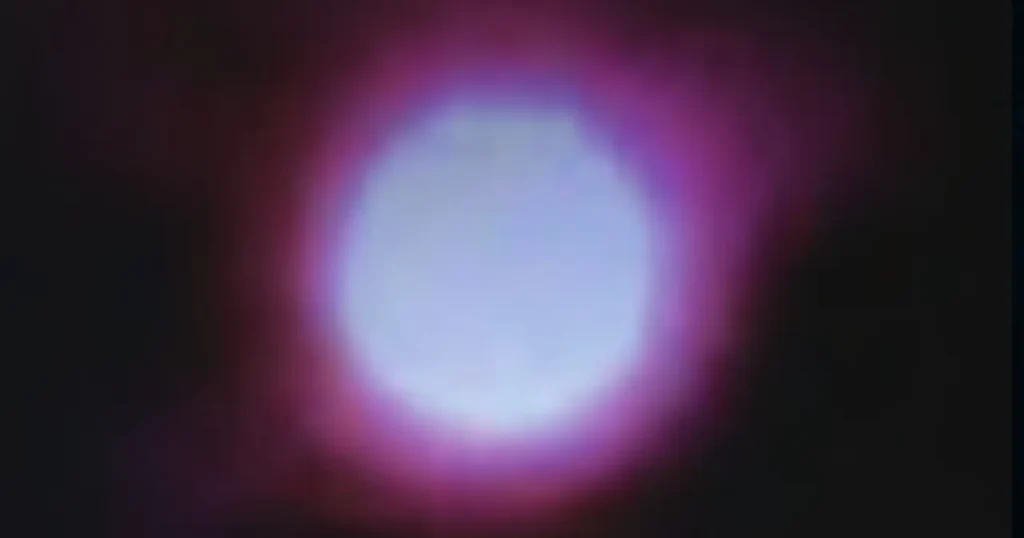In a groundbreaking leap for defense and scientific innovation, Chinese researchers have successfully developed a portable nuclear neutron gun powered by hydrogen-lithium nuclear fusion. This revolutionary advancement has the potential to reshape not only bomb detection but also various scientific and industrial sectors. Dubbed the “atomic flashlight”, this compact device fires high-energy neutrons capable of penetrating materials to reveal hidden objects, including explosives.

What Is China’s Nuclear Neutron Gun?
The neutron gun, developed by scientists at the Xi’an Modern Control Technology Research Institute, marks the first successful controlled nuclear fusion between hydrogen and lithium inside a portable device. Unlike traditional neutron sources, which rely on large-scale particle accelerators or fusion reactors, this new system fits within the size of a fire extinguisher and consumes as little as 10 watts of electricity—less than a typical light bulb.
At its core, the Portable Nuclear Neutron Gun uses a mechanical hammer to activate piezoelectric ceramics, generating nanosecond bursts of up to 1 million volts. This energy forms a rapidly spinning electromagnetic field, in which hydrogen protons are accelerated into a lithium-coated cathode, causing nuclear fusion. The fusion reaction produces over 10 billion fast neutrons per second, each carrying three million electron volts of energy—similar to what is found in the explosion of an atomic bomb.
Why This Matters: Neutron Beams and Bomb Detection
Neutrons, being electrically neutral, can pass through most materials, making them ideal for scanning hidden objects. This quality gives rise to the term “atomic flashlight”—a beam that can illuminate atomic structures and concealed materials alike.
In security applications, this capability is particularly transformative. The neutron gun can detect hidden explosives with high precision and in real-time, even if they are shielded within dense or layered materials. This drastically enhances the ability of security agencies, military units, and border forces to detect threats without lengthy or intrusive inspection procedures.
Key Benefits of China’s Neutron Gun Technology
1. Portability and Energy Efficiency
Previous neutron sources were confined to laboratories or large defense installations due to their size and power demands. China’s new device changes that narrative. It’s compact, lightweight, and runs on low power, making it suitable for field operations, airport security, and emergency bomb squads.
2. Cost-Effective and Simple Materials
Unlike older fusion technologies that require expensive and rare isotopes such as deuterium or tritium, this neutron gun uses common hydrogen and lithium. This not only lowers production costs but also simplifies manufacturing and maintenance.
3. Multifunctional Use Cases
While bomb detection is the headline application, the neutron gun’s impact could stretch far beyond security:
- Medical Imaging: Neutron beams could be used in advanced cancer treatments or in imaging techniques to detect deep tissue abnormalities.
- Scientific Research: It may help researchers study the atomic structure of complex materials, contributing to advancements in materials science, biology, and chemistry.
- Industrial Testing: The technology could detect microscopic cracks in airplane wings, bridge components, and other critical infrastructure.
Security and Ethical Implications
Though incredibly promising, the technology does raise some security and ethical concerns. With capabilities akin to those found in neutron bombs, albeit on a non-lethal scale, such a device could be weaponized or misused. However, current evidence suggests China’s primary intention is defensive and diagnostic, focusing on bomb detection and non-invasive inspections rather than military aggression.
It’s also worth noting that directed-energy neutron weapons & Portable Nuclear Neutron Gun once confined to science fiction, are inching closer to reality. While China’s device is not a weapon per se, its ability to emit high-energy neutron beams in a portable form hints at the next generation of directed-energy defense systems.
A Look Inside the Technology
Here’s how the neutron gun works step-by-step:
- Energy Generation: A mechanical hammer hits piezoelectric ceramics, creating short bursts of electrical energy.
- Voltage Pulse: This produces high-voltage nanosecond pulses, up to 1 million volts.
- Electromagnetic Cage: The pulses spin into a vortex, forming a miniature nuclear reactor in a cup-sized enclosure.
- Fusion Reaction: Hydrogen protons collide with lithium atoms, triggering nuclear fusion.
- Neutron Emission: The device emits a narrow beam of fast neutrons—10 billion per second—used for imaging or detection.
Final Thoughts
China’s development of a hydrogen-lithium powered neutron gun represents a paradigm shift in nuclear fusion and detection technologies. With applications spanning from homeland security to medical diagnostics, this innovation could become a cornerstone in the fight against terrorism, the quest for scientific discovery, and the future of non-invasive scanning technologies.
As the world watches closely, this “atomic flashlight” may soon light the way to safer cities, more secure borders, and smarter diagnostics—proving once again that some of the most powerful innovations can come in the smallest packages.







